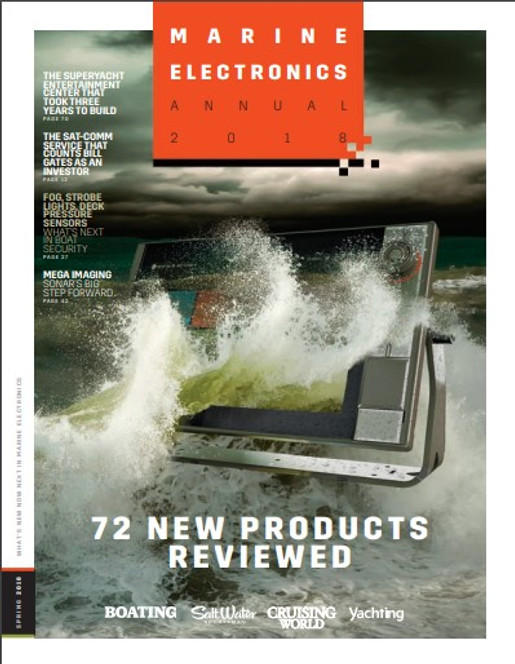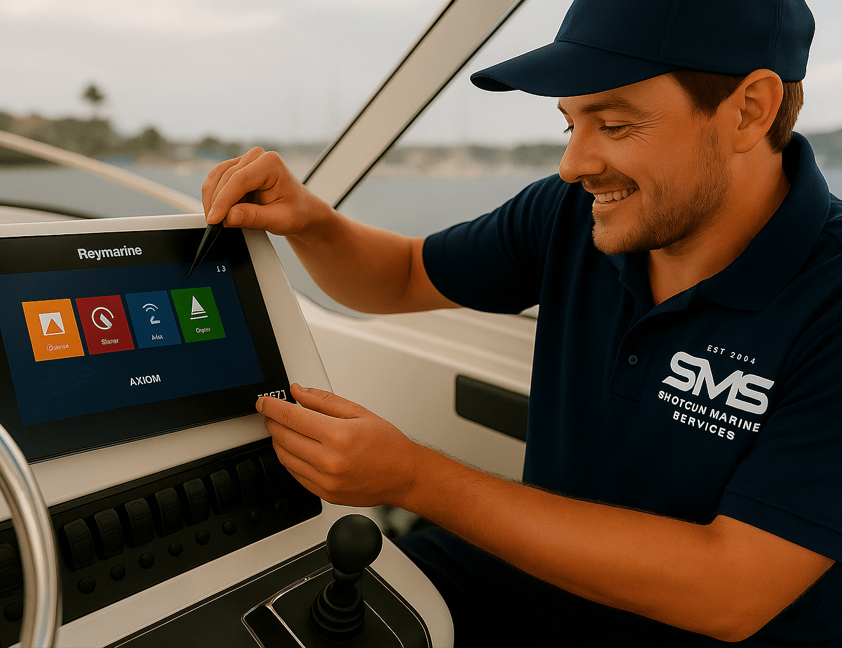 For heaps of useful info on marine technolgy leading the way in 2018 check out the magazine.
For heaps of useful info on marine technolgy leading the way in 2018 check out the magazine.
Loads of intelligence and product reviews for you to read while your waiting for the fish to bite.
Looking for an overview of the newest techonolgy in Marine radar, autopilots, gps sounders, and more. Boating mag's annual 2018 has done all the work for you.
Exploring the Latest Advancements in Marine Radar, Autopilots, GPS Sounders, and More
The world of marine electronics has seen some major technological leaps in recent years. Whether you're a seasoned captain or a recreational boater, staying up to date with the newest technology can drastically improve your on-water experience. From marine radar to autopilots and GPS sounders, the innovations in these systems offer enhanced navigation, better safety features, and overall improved performance on the water. In this blog, we'll dive into the latest and greatest tech that is shaping the future of boating.
1. Advanced Marine Radar Systems
Marine radar has always been an essential tool for ensuring safety while navigating through foggy waters or avoiding other vessels. But with recent advancements in technology, today's radar systems offer more than just basic collision avoidance.
Key Features of Modern Marine Radar:
- CHIRP Technology: CHIRP (Compressed High-Intensity Radar Pulse) radar has transformed the way radar systems detect objects. By transmitting continuous radar pulses over a range of frequencies, CHIRP radar provides a clearer, more detailed picture of the surrounding environment, even in challenging conditions.
- Doppler Technology: Doppler radar, integrated into some of the latest models, allows for the detection of moving targets and provides critical data about their speed and direction. This feature is invaluable for collision avoidance and navigating busy waters.
- Improved Range and Resolution: With cutting-edge radar technology, modern systems now offer longer range and greater resolution, allowing you to detect objects from farther away and with more accuracy, whether you're navigating close to shore or far offshore.
2. Autopilot Systems: The Future of Hands-Free Navigation
For boaters who want a more relaxed cruising experience, autopilot systems have become game-changers. Today’s autopilot technology is more precise and reliable than ever before, making long-distance journeys and even short trips much easier and safer.
What Makes Modern Autopilots So Special?
- Integration with Other Electronics: New autopilot systems seamlessly integrate with other onboard electronics like GPS, radar, and sonar. This integration allows the autopilot to make real-time adjustments based on the information received from these devices, ensuring accurate and efficient navigation.
- Enhanced Course Control: Advanced autopilots now feature enhanced course control, which enables the system to adjust course changes with minimal input from the operator. Whether it's for navigating through narrow channels or staying on course during rough seas, modern autopilots provide improved performance.
- Auto-Learning Technology: Some of the latest autopilot systems can “learn” your boating style. By automatically adjusting steering inputs based on your preferences, these systems provide a more personalized and smoother cruising experience.
3. GPS Sounders: Better Navigation and Fish Finding
When it comes to navigation and fishing, GPS sounders are essential tools. These systems combine the power of GPS and sonar to give boaters a clearer understanding of their surroundings, helping with everything from plotting a course to locating fish.
What’s New in GPS Sounders?
- CHIRP Sonar: Much like radar, CHIRP sonar technology has revolutionized the fish-finding experience. By transmitting sonar waves across a range of frequencies, CHIRP sonar systems provide clearer and more detailed images of the underwater environment. This allows for more accurate depth readings and better identification of fish and other underwater features.
- Side-Scan and Down-Scan Imaging: Newer models come with advanced side-scan and down-scan imaging features, which allow for high-resolution views of the water column and the seafloor. This technology is invaluable for finding fish, underwater structures, and navigational hazards.
- Integration with Mapping Software: Many of the latest GPS sounders are integrated with digital mapping systems, enabling boaters to navigate in real-time using pre-loaded charts or custom mapping. This can be especially helpful when exploring new waters, as these systems offer detailed topographic information to guide your journey.
4. The All-in-One Systems: An Integrated Approach
As the demand for user-friendly technology grows, manufacturers have started to create all-in-one systems that combine radar, GPS, sonar, and autopilot features into a single integrated unit. These systems streamline the navigation process by consolidating all of the essential tools onto one display.
Benefits of All-in-One Marine Electronics:
- Seamless Integration: All-in-one systems allow for smooth integration between all onboard electronics, which means data is shared between devices, improving overall efficiency and performance. For instance, when the radar detects an object, the system can alert you and provide directional guidance on the GPS or autopilot.
- Simplified Control: These systems often feature a touch-screen interface, making them easier to navigate and operate. With simplified controls and quick access to critical information, they can reduce the complexity of managing multiple devices on board.
- Cost-Effective: While some of these integrated systems can be more expensive upfront, they often save you money in the long run. Instead of buying multiple separate systems, you get everything you need in one unit, often with added functionality.
5. Emerging Trends and Future Tech
The marine electronics industry is rapidly evolving, and the future holds even more exciting developments. From artificial intelligence to enhanced connectivity, the next generation of marine tech promises even more convenience, accuracy, and safety on the water.
Key Emerging Trends:
- Artificial Intelligence (AI): AI is beginning to make its way into marine electronics, helping systems to better understand and predict conditions. This technology could allow for self-adjusting autopilots, predictive navigation, and even real-time hazard detection.
- Increased Connectivity: Wi-Fi and cellular connectivity are becoming more important on the water. New systems are making it easier for boaters to access live weather updates, track their boat's location remotely, and stay connected while offshore.
- Augmented Reality (AR): Some manufacturers are experimenting with augmented reality for marine navigation. By overlaying real-time data on a view of the water, AR technology could enhance situational awareness and improve safety by displaying navigational charts, radar data, and fish locations directly in your line of sight.
Conclusion: Embracing the Future of Marine Electronics
With all these advancements in radar, autopilot systems, GPS sounders, and all-in-one electronics, today’s marine technology is more powerful, intuitive, and accessible than ever before. Whether you’re a fisherman looking for the perfect catch, a recreational boater, or a professional navigator, these innovations can make your time on the water safer and more enjoyable.
By staying on top of the latest technologies and integrating them into your boating setup, you’ll ensure you have the tools you need to navigate with ease and efficiency—no matter what the sea throws your way. So, dive into the latest marine tech, and get ready for a whole new world of possibilities on the water!


